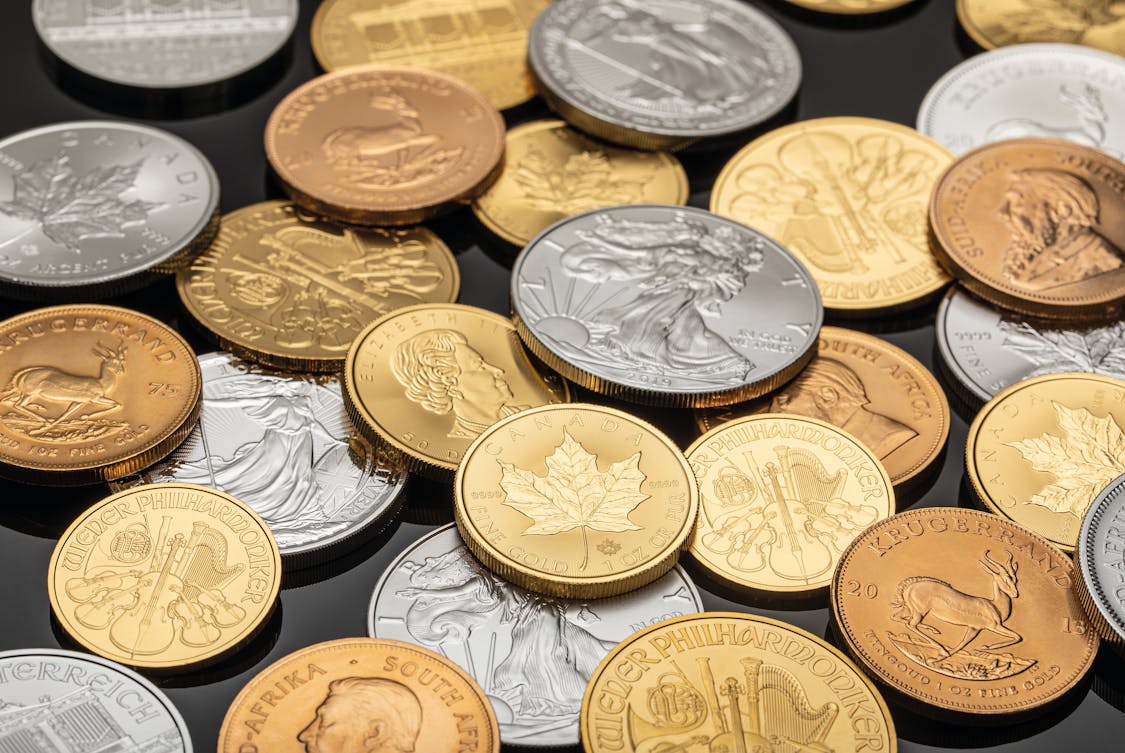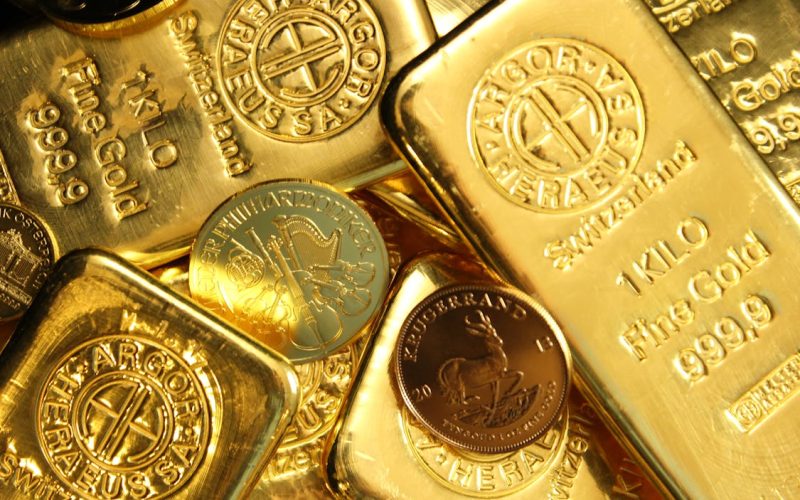Precious metals have long captured the human imagination with their beauty, rarity, and intrinsic value.
These unique materials are not just attractive; they hold a significant place in various industries and cultures. Below are ten essential facts about precious metals that everyone should be aware of.
1. Common Types of Precious Metals
When talking about precious metals, gold, silver, platinum, and palladium usually come to mind. Each of these metals has unique properties that make them desirable in different contexts.
Gold is primarily known for its use in jewelry and as a financial hedge. Silver, with its high conductivity, finds applications in electronics and photography.
Platinum is rarer than gold, making it an attractive option for high-end jewelry and industrial applications, especially in catalytic converters for vehicles.
Palladium has surged in popularity for similar reasons, often used in the automotive industry to reduce emissions. Understanding these distinctions can help in appreciating their market dynamics.
2. Investment Opportunities
Investing in precious metals can take various forms, including physical ownership, ETFs, and stocks in mining companies.
Buying physical gold or silver coins and bars gives investors direct ownership. This tangible form of investment holds its allure due to the metal’s inherent value.
If you’re considering adding physical bullion to your portfolio, Money Metals is a reliable source for purchasing gold and silver with confidence.
Exchange-traded funds (ETFs) provide an alternative for those who want exposure without the hassle of storage and security. These funds track the price of precious metals and are a more liquid option.
For those who enjoy the thrill of the stock market, investing in mining companies can also be an intriguing pathway.
The choice of investment form depends on your risk tolerance and financial goals.
Each method has its pros and cons, so it’s wise to research and decide which route aligns best with your objectives. As with any investment, diversification is key to mitigating risks.
3. Historical Significance
Precious metals have been used as currency, symbols of wealth, and markers of power throughout history. Gold coins date back thousands of years, and ancient civilizations often used silver and gold to facilitate trade.
The durability and divisibility of these metals made them the foundation of economic systems around the world.
In many cultures, precious metals have also served as status symbols. Kings and queens adorned themselves with gold and jewels, reflecting their power and influence.
The symbolism surrounding these metals still resonates, making them sought-after assets even in modern times.
The historical context enriches our understanding of precious metals today. They are not just commodities; they are also steeped in tradition and cultural significance.
Recognizing this legacy can add depth to your appreciation of these valuable resources.
4. Industrial Applications
Beyond their financial allure, precious metals play essential roles in various industries.
Silver has fantastic conductivity and is pivotal in manufacturing electronics, solar panels, and medical devices. Its antibacterial properties also make it valuable in healthcare settings.
Platinum and palladium are crucial in the automotive sector. They are used in catalytic converters to control harmful emissions, helping meet environmental standards.
As sustainability becomes a priority, the demand for these metals in green technologies continues to grow.
The industrial applications of precious metals illustrate their multifaceted value. They are indispensable in shaping the technologies that drive our daily lives. As the world moves toward greener solutions, the role of these metals will likely expand even further.
5. Supply and Demand Factors
The dynamics of supply and demand significantly affect the prices of precious metals. On the supply side, mining activity and geopolitical stability in producing regions play critical roles.
Political unrest or changes in regulations can disrupt supply chains, leading to price fluctuations.
On the demand side, economic conditions and trends influence consumer preferences.
For instance, a booming economy typically amplifies demand for gold as a luxury item, while downturns often lead to increased interest in gold as a safe investment.
Understanding these factors can provide insights into market trends. Keeping up with news related to mining operations or economic indicators can help predict price movements, making you a more informed investor.
6. Storage and Security
When investing in physical precious metals, proper storage and security are paramount. Safes at home may provide peace of mind, but they also carry risks such as theft or fire damage.
Consider using a safe deposit box at a bank or a specialized storage company for added security.
Insurance is another important consideration for precious metals held physically. Insuring your investments can mitigate potential losses from theft or damage.
It’s essential to assess the value of your collection or investments accurately to ensure appropriate coverage.
Security should never be overlooked. Whether you’re storing gold coins or silver bars, taking the necessary precautions can safeguard your assets.
The peace of mind that comes from knowing your investments are secure is invaluable.
7. Gold vs. Silver: The Great Debate

Gold and silver often find themselves in competition when it comes to investments. Gold is seen as a store of value, especially during economic downturns.
Its rarity and widespread recognition make it a preferred choice for investors seeking stability.
Silver, on the other hand, is more volatile but offers potential for higher returns. Its industrial applications lead to demand that can fluctuate dramatically based on market conditions.
Investors who understand these differences can better align their strategies with their financial goals.
The debate between gold and silver is ongoing and can be influenced by market trends. Both metals have their unique advantages and challenges.
Balancing investments in both can provide a more diversified approach while positioning you to benefit from different market conditions.
8. Impact of Technology
Technological advancements have significantly affected the mining and processing of precious metals. Innovations such as automated mining and improved extraction methods have enhanced efficiency and reduced costs.
This has made it easier for companies to meet growing demand and maintain profitability.
Moreover, technology has also influenced how investors engage with precious metals. Digital platforms allow for streamlined trading and increased access to market data.
Investors can now track prices in real time, making informed decisions at the click of a button.
Understanding the role of technology can give you an edge in the precious metals market. Staying updated on industry trends and technological innovations can offer insights that shape your investment strategies.
9. Environmental Considerations
Mining for precious metals raises environmental concerns that cannot be ignored. The extraction process often leads to land degradation, water pollution, and biodiversity loss.
As awareness of environmental issues grows, so does the pressure on mining companies to adopt sustainable practices.
Many firms are now implementing eco-friendly methods, such as reducing water usage and minimizing waste.
Investors are increasingly considering the ethical implications of their investments, leading to a rise in demand for sustainably sourced metals.
Being informed about the environmental impact of precious metals can guide your investment choices. Supporting companies that prioritize sustainability can align your values with your financial goals, fostering a more responsible investment approach.
10. Future Trends
The future of precious metals is shaped by various factors, including economic trends, technological advancements, and geopolitical events.
With increasing interest in renewable energy, metals like silver and palladium may see heightened demand for their roles in tech applications.
As digital currencies gain traction, some investors may shift their focus away from traditional assets. However, many still view precious metals as a hedge against market volatility.
Understanding future trends is essential for anyone engaged in the precious metals market. Keeping an eye on emerging technologies and economic shifts can help you make informed choices as the landscape evolves.


